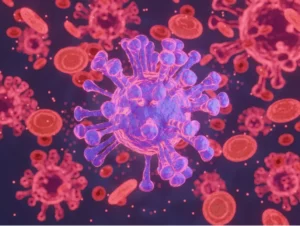The H5N1 Influenza Virus Shows We Haven’t Learned Vital Communication Lessons
May 9, 2024

Similar ideas also appeared in this post, which was co-authored by Critica CEO, Sara Gorman.
“The virus is present in drinking milk…The milk is safe to drink.”
That is essentially the message that U.S. federal agencies gave to the American people through March, April, and May this year about the avian or H5N1 flu. How reassuring is that message? For some, it probably was sufficient to allow them to continue to consume dairy products; for others, it probably caused panic. How can they say that the avian or bird flu strain H5N1 is present in milk but still tell us it is okay to drink? Isn’t avian flu very serious?
Indeed, avian flu can be an extremely serious infection. It was responsible for the 1918 influenza pandemic that killed millions of people worldwide. H5N1 is a distant relative of the H1N1 strain that caused the 1918 pandemic and therefore there is every reason to fear it. Suddenly last month articles appeared constantly in the press telling us that dairy herds have been infected with H5N1 for months after they somehow got the virus from birds through a still unclear route. Then, we got further news that fragments of the virus had been detected by the U.S. Food and Drug Administration (FDA) in samples of commercially available milk. Finally, the FDA stated that pasteurization seems to inactivate the virus, leading to the reassurance that pasteurized dairy products are safe. The FDA renewed its longstanding advice that no one consume raw, unpasteurized milk or cheese. A 2019 study found that 4.4 percent of U.S. Americans consumed unpasteurized dairy products at least once in the previous year.
Communications About H5N1 Are Fragmented
The communication of these various snippets of information left much to be desired. Three federal agencies are working on investigating the spread of the H5N1 virus, the FDA, the Department of Agriculture (USDA), and the Centers for Disease Control and Prevention (CDC). The FDA tests the milk and other dairy products we consume; USDA tests animals for viral infection; and the CDC investigates whether the H5N1 strain is infecting people. These three agencies acted seemingly entirely independently, with little coordination of messages among them. Consequently, there was no coordinated public communication strategy. Furthermore, many scientists complained that each agency was acting too slowly to investigate how many animals are infected and whether the virus is spreading to people. Taken together, these missteps has led people to be unsure about whether a real threat to our health was imminent.
Here is what we know about bird or avian flu as of the writing of this commentary in early May. Known officially as highly pathogenic avian influenza (HPAI) A virus (H5N1), the avian flu has been known to infect poultry for many years. “Nearly 900 people in 23 countries have been infected with the H5N1 bird flu virus since it started spreading from Southeast Asia in late 2003,” according to STAT’s Helen Branswell. All those cases, however, were linked to infection passed on to humans from birds, mostly domestic poultry. Then, in early May, a report appeared in the New England Journal of Medicine (NEJM) detailing the first case of avian flu passed from a mammal to a human. This individual, a Texas dairy farm worker, showed signs and symptoms of an eye infection—conjunctivitis—and upon further testing was shown to be infected with the H5N1 virus, most likely transmitted from infected cattle with which he had been working.
Scientists Worry That Testing is Inadequate
What worries scientists and public health experts is that insufficient testing of animals, humans, and dairy products leaves us in the dark about how extensive infection rates really are. It is unlikely that the dairy worker detailed in the NEJM paper is the only person with direct infection from a cow in the U.S. given how widespread cattle infection is now known to be. Testing of individuals is a state responsibility, and the CDC only monitors the results of those tests and cases of H5N1 infection that turn up in emergency departments. That testing is said to be inadequate by many experts, in part because a large proportion of U.S. dairy farm workers are undocumented immigrants who may fear contact with government agencies.
It is possible that the direct cattle to human transmission is still very limited, and it is reassuring that the one known infected person had a very mild case that resolved uneventfully. But scientists also worry that the virus will jump to infect pigs. Influenza viruses are known to mutate more efficiently in pigs to strains that can infect and sicken humans than they can in other animals, so such an event would be cause for concern.According to three researchers from Johns Hopkins University, “H5N1 is in a better position than ever to move between species and spill over aggressively into humans.”
The three agencies responsible for investigating H5N1 spread are clearly hampered in their ability to do a thorough job by lack of coordination among them and between them and various state agencies involved in testing. There is also fragmented communication to the public that makes people unclear about whether it is really safe to drink milk and what precautions they should be taking. As New York Times op ed writer Zeynep Tufekci put it, “I’m shocked by how little they seem to know about what’s going on and how little of what they do know is being shared in a timely manner.”
What is needed is one, central federal authority charged with the responsibility of coordinating communication efforts among agencies and messaging the public with up-to-date, reliable, and accessible information. That agency would have the authority to gather information quickly from other federal and state agencies and use evidence-based communication methods to ensure the public receives accurate and timely information. When there is uncertainty about an issue, as there is with H5N1 viral spread, the agency would explain that uncertainty in ways that people can understand.
We should have learned important lessons about public health communication from the Covid-19 pandemic. Failure of health agencies to address the public and to openly acknowledge areas of uncertainty fueled conspiracy theories and abetted misinformation purveyors during the pandemic, leading to significant amounts of vaccine hesitancy and preventable illness and deaths. The H5N1 virus situation should have been an opportunity to capitalize on these lessons from the pandemic, but so far what we have seen is fragmented communication. We need to do better.
Related Posts

The Word Is That We Haven't Been Listening to People
Posted in conspiracy theories
The public health community is in for a challenge starting this year. We need to start listening better to the American population to understand how better to serve it.

The Lab Leak Hypothesis for the Origin of the COVID-19 Virus is Dangerous
Posted in COVID
The lab leak theory is most likely wrong and engenders mistrust.

How the News Politicizes Science
Posted in Health Communication
Ever wonder where people get ideas like face masks are unsafe? It might be time to examine local TV news.